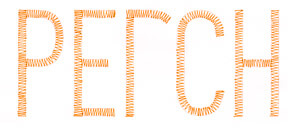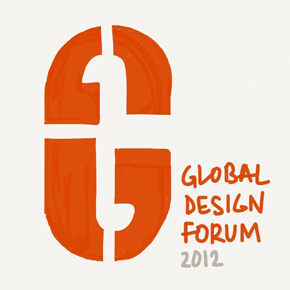On September 18th this year, Aditya and I were in London to attend the first ever Global Design Forum. Curated and delivered by the London Design Festival, the forum looks to provide a platform for important ideas about the future role of design around the world.
The forum proved to be an ambitious project by the London Design Festival which, having just completed its tenth edition, looks all set to cash in on its popularity as the world’s most popular design festival in the world’s most popular creative capital. Indeed, the Global Design Forum brought together the luminaries of the design world to debate some of the key questions affecting the design industry globally:
- How are the creative industries changing around the world?
- How is the business of design affected by the client-designer relationship?
- What is the impact of rapidly-advancing technology on the role of the designer as a professional?
These were just some of the questions discussed by not just the speakers, but delegates as well, all of whom were invited to poll on some of the key points raised by moderator Brendan Walker. Together, the day’s objective was to “set the global agenda for design”. These are my sketchnotes from the day:
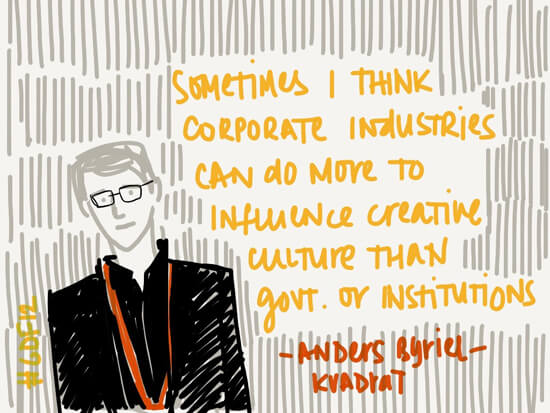
Kvadrat is a textile company known that collaborates extensively with a range of creative professionals. Working to develop ever more ambitious materials, they have supported some landmark projects around the world. Anders Byriel as CEO of Kvadrat and Chair of the Danish Design Council spoke of how corporations can take the lead in creating more rewarding life experiences where governments often hesitate or fail to deliver.
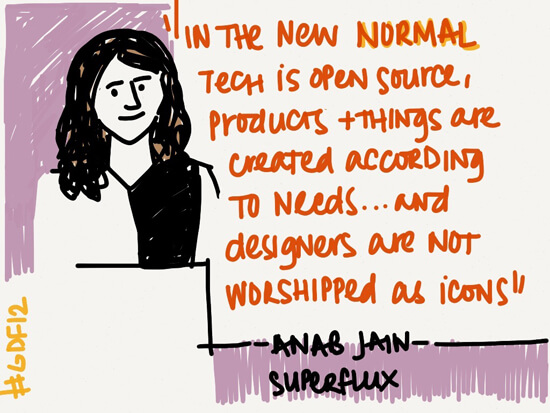
Anab Jain of London and Ahmedabad based Superflux made a fascinating presentation on the development of open-source, 3D printing technology and how it’s changing the designed landscape of the future. Commenting on how digital technology is rapidly democratising the way making and manufacture of essential products, she observed that in a world where people make what they require, design is no longer a sole power broker between the haves and have-nots.

Ellen Kiss, Director of Brazilian Association of design companies ABEDESIGN, meanwhile examined the way in which trends and information flow between neighbourhoods, regions and nations. She made the interesting observation that cities in different parts of the world often have more in common than villages near cities and that perhaps the idea of “local” should be re-interpreted to take these virtual distances into account.
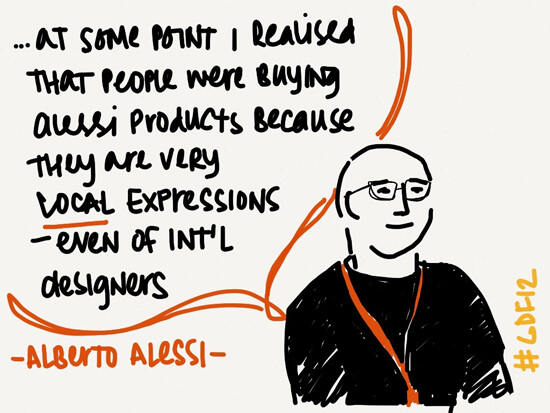
Alberto Alessi of legendary brand Alessi addressed a fundamental question of identity in the global-local context. He estimated that even globally renowned post-modern and contemporary designers who have created products for the company, have still brought their own individual/local sensibilities to the process. “It is difficult to leave yourself behind,” he surmised.
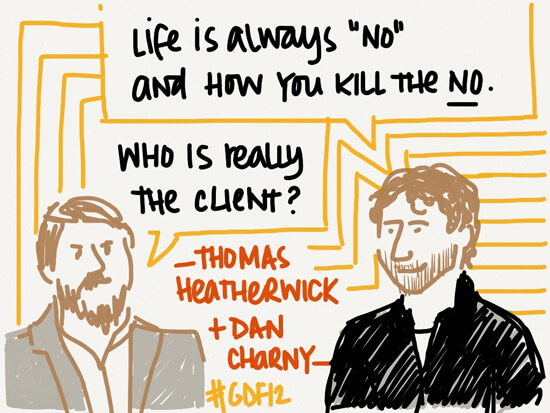
Thomas Heatherwick was, by far, the star attraction for us. Hearing the multi-disciplinary designer talk of his love for making things, his passion for material and his attitude towards the client-designer relationship was both moving and inspiring.
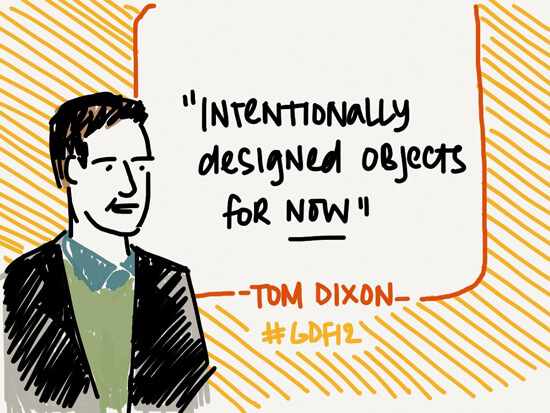
Providing a counter-point to Anab Jain’s presentation, product designer Tom Dixon elaborated on the challenges of being ahead in a field where their products are instantly copied, faked and plagiarised. Keeping abreast of technology by constantly adapting the design process is one way in which his company has taken on the challenges of the marketplace.

Continuing with the theme of Digital/Design, Ben Terret, Head of Design for Govt. Digital Services made a case for design that fosters better relationships between government and citizens. Soon to launch is a simpler, clearer, faster version of the UK government’s digital services platform at http://www.gov.uk which will be a single portal for everything from tax payments to travel information. Read their design principles here.
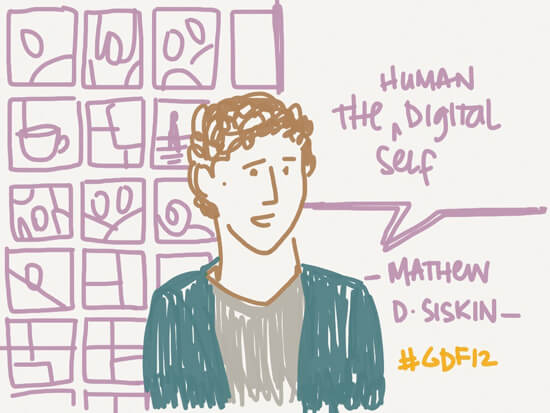
Mathew D. Siskin spoke of the instinct which drives people to create human digital selves whether as personal websites, blogs or social media avataars.
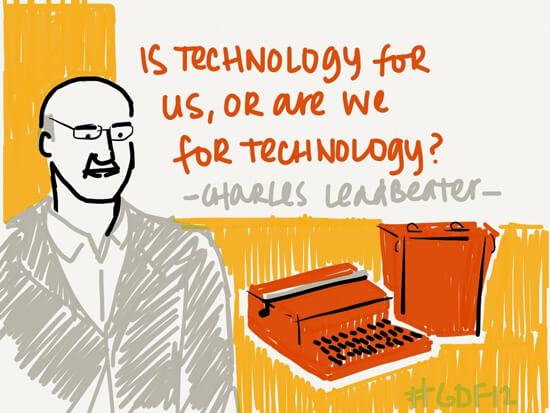
And while Charles Leadbeater cautioned us all to think of how we relate to technology, embracing it, is the only way to move forward into a confident future, he said.
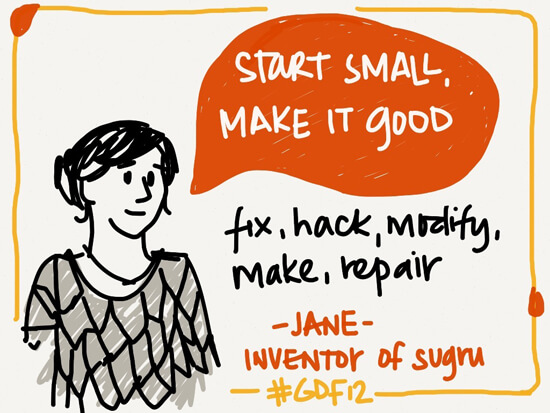
Jane ni Dhulchaointigh, inventor and CEO of Sugru, explained how their business model is founded on straightforward principles to encourage people to alter, adapt, modify and mend everyday objects instead of discarding broken or unsuitable items. To my mind, hacking objects like this is a lot like jugaad.

Frank Stephenson, Head of Design at McLaren spoke of another way in which businesses can be built upon design: through the relentless pursuit of quality though cars that are as beautiful as they are functional.
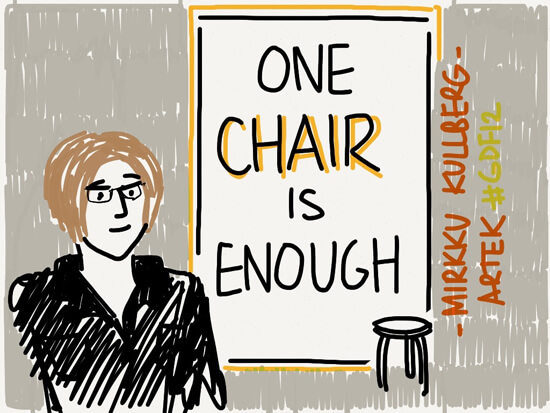
In the face of blatant consumerism though, Artek – the manufacturers of Aalvar Aalto’s signature furniture – advocate the “less is more” principle: if you buy one good chair, that chair is enough: there is no need for product diversification if you already have a great product with great design values embedded in it.
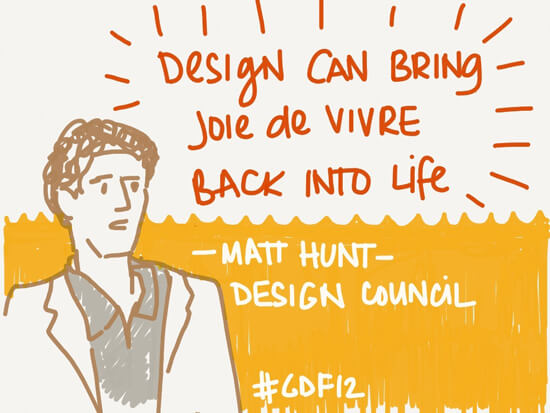
Mat Hunter (*correction), presented some of the UK Design Council‘s more inspired design projects for the elderly, sick and differently abled…

…while Richard Seymour of SeymourPowell Product Design called for radical approaches to the creative process that anticipate the future rather than simply catering to the present.
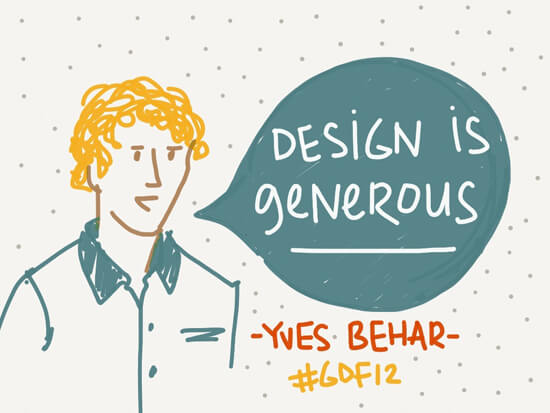
Yves Behar of fuseproject on the other hand, reminded us that designers, by their impulse to solve problems for other people, are generous in their pursuits. It is important to understand this as design and business come closer and closer together.
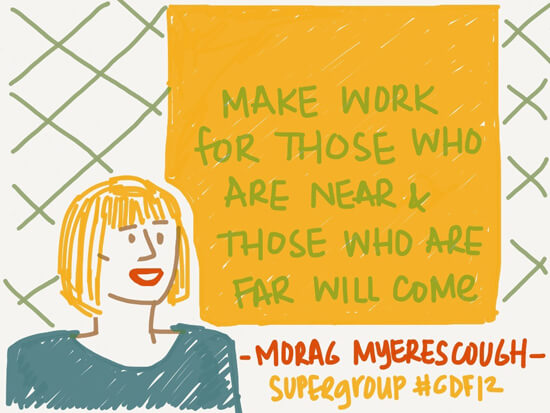
“Placemaker” Morag Myerscough presented her work and practice in using design to foster a sense of community in shared spaces…
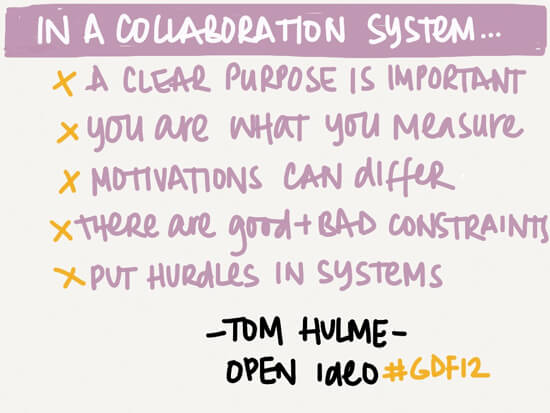
…and Tom Hulme from collaborative platform OpenIdeo ennumerated the qualities of a collaborative system.
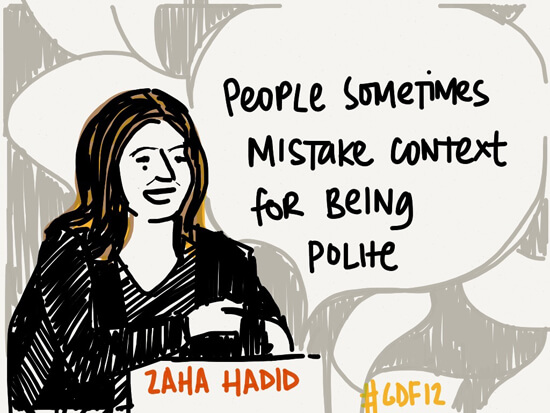
The grand finale consisted of an interview of architect Zaha Hadid by Joseph Grima, the editor of Domus magazine. I guess this quote sums up the source of a lot of the controversy around her path-breaking and radical vision for architecture.
To sum up, some of the themes that emerged in the course of the day reflected the anxieties that are common to designers everywhere: how to be authentic and genuine, yet original and future forward. While the Global Design Forum may or may not have set a global agenda for design, it certainly highlighted that the concerns of the of few are quickly becoming the concerns of many and vice versa. How and when we respond to those concerns here in India, is a matter that only time will tell.
*
These sketches were created live at the Global Design Forum 2012 using the Paper app on an iPad.
All sketches, text and material are © Ruchita Madhok, 2012 except where indicated otherwise. Please do not distribute without permission
